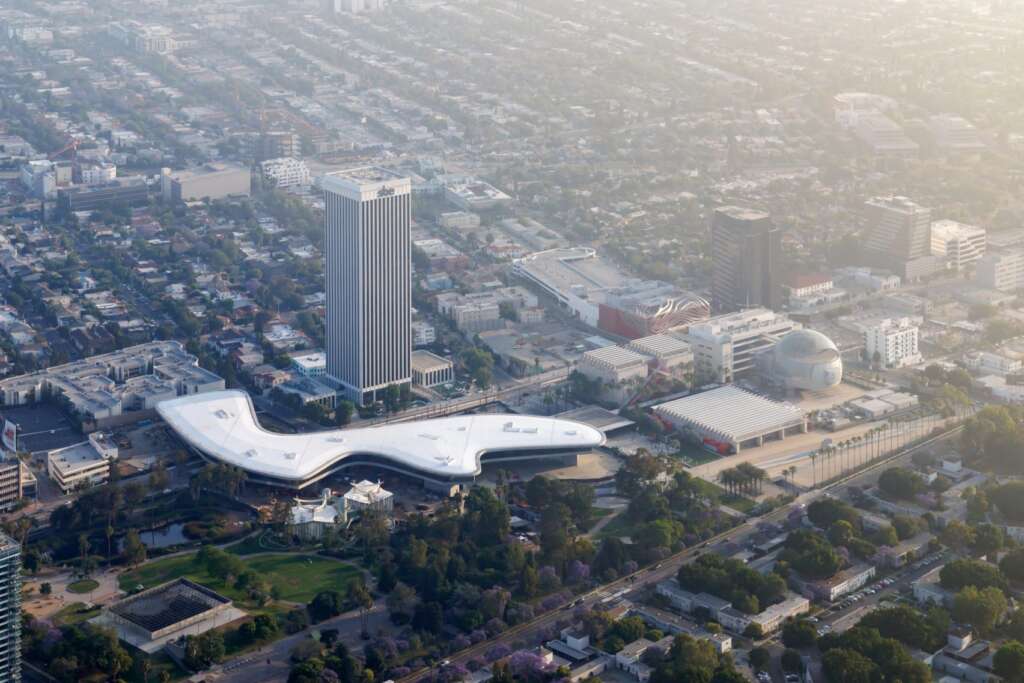Share This Article
Explore the newly unveiled David Geffen Galleries at LACMA, designed by Peter Zumthor. Discover how this architectural icon is reshaping the future of museum design in Los Angeles.
After years of anticipation, the first look inside the David Geffen Galleries—the centrepiece of LACMA’s dramatic redesign—is finally here. Designed by Pritzker Prize-winning architect Peter Zumthor, this landmark structure is poised to redefine how we experience art in the heart of Los Angeles.
More than just a building, the new LACMA is a bold experiment in museum design, where architecture and curation walk hand in hand. The gallery, nicknamed “The Lens,” offers a fluid and open approach to showcasing culture—unlike any traditional museum you’ve seen before.
The Vision Behind the Design
When LACMA decided to rethink its campus, it didn’t want another box filled with white-walled rooms. Instead, Zumthor envisioned a museum that felt human, natural, and open—a structure that flows like art itself.
Spanning across Wilshire Boulevard, the Geffen Galleries are built on stilts, forming a massive, organic-looking horizontal platform. The shape is reminiscent of an inkblot or a smooth oil spill—dynamic, unpredictable, and full of possibility. Below the structure, shaded public plazas and green zones welcome the city in.
The design emphasizes transparency, community, and accessibility. With floor-to-ceiling glass walls, the galleries offer panoramic views of the city, breaking down the barriers between art and everyday life.

What Makes the David Geffen Galleries Different?
- Single-Level Experience
Unlike traditional museums with multiple floors, the David Geffen Galleries are laid out on one continuous floor. This makes for a seamless and intuitive journey, where visitors can wander freely between periods, styles, and mediums without climbing stairs or feeling boxed in. - Diverse and Decentralized Displays
The new LACMA design moves away from linear, Eurocentric narratives of art history. Instead, it promotes cross-cultural storytelling, where ancient ceramics might sit next to modern sculpture, and Asian art might be displayed alongside American design. - Sustainability Focus
The galleries have been designed with sustainability in mind. Natural light is used wherever possible, and the structure hovers to reduce its environmental footprint. Green spaces below also help with cooling and urban biodiversity.
Photography and First Impressions
The stunning first images by Iwan Baan, known for his poetic architectural photography, reveal a building that feels light, grounded, and full of life. You see not just concrete and glass, but moments of community, city interaction, and organic forms meeting urban movement.
From different angles, the building changes character—sometimes sculptural, sometimes minimalist, sometimes playful. It reflects Zumthor’s mastery in working with materiality and atmosphere, making buildings that feel rather than just look good.

A Statement of the Future
With the David Geffen Galleries, LACMA is taking a stand. It’s saying that art should be for everyone, that museums should invite the city in, not wall people out, and that architecture can inspire without overwhelming.
This is more than a renovation—it’s a philosophical shift. It puts Los Angeles on the global map for cultural innovation, joining the ranks of iconic institutions like the Louvre Abu Dhabi, the Tate Modern, or the Guggenheim Bilbao.

Why This Matters for the Future of Museums
Peter Zumthor’s David Geffen Galleries at LACMA are not just a triumph of design—they are a reinvention of what a museum can be. For architects, curators, and urbanists around the world, this building is a case study in how form, purpose, and emotion can come together to create a timeless experience.
If you’re in Los Angeles, make sure to experience it yourself. And if you’re watching from afar, keep an eye on LACMA—because this is what the future of museum design looks like.


Source: https://bit.ly/4eNhhHE
